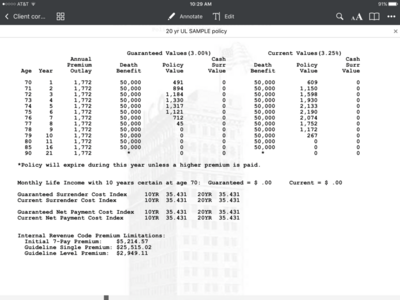- Thread starter
- #21
- 326
Came across another UL yesterday--this one not the indexed kind---from Voya which she was in a time crunch not allowing me to review it well so hope to get back----obviously now I need to run some illustrations of UL and GUL to get a better understanding of how to assess one fast. It said 5 year guarantee which of course is nothing but it was Greek to me otherwise never really studied one which I will educate myself on now. Of course I know it changes/lapses when CV zeros and the little drawing offered up in the thread helped me explain it to give her enough concern to get an invite back I'm sure--------does that annual statement which she was unfamiliar with and that i told her to order up indicate when its due to lapse?

